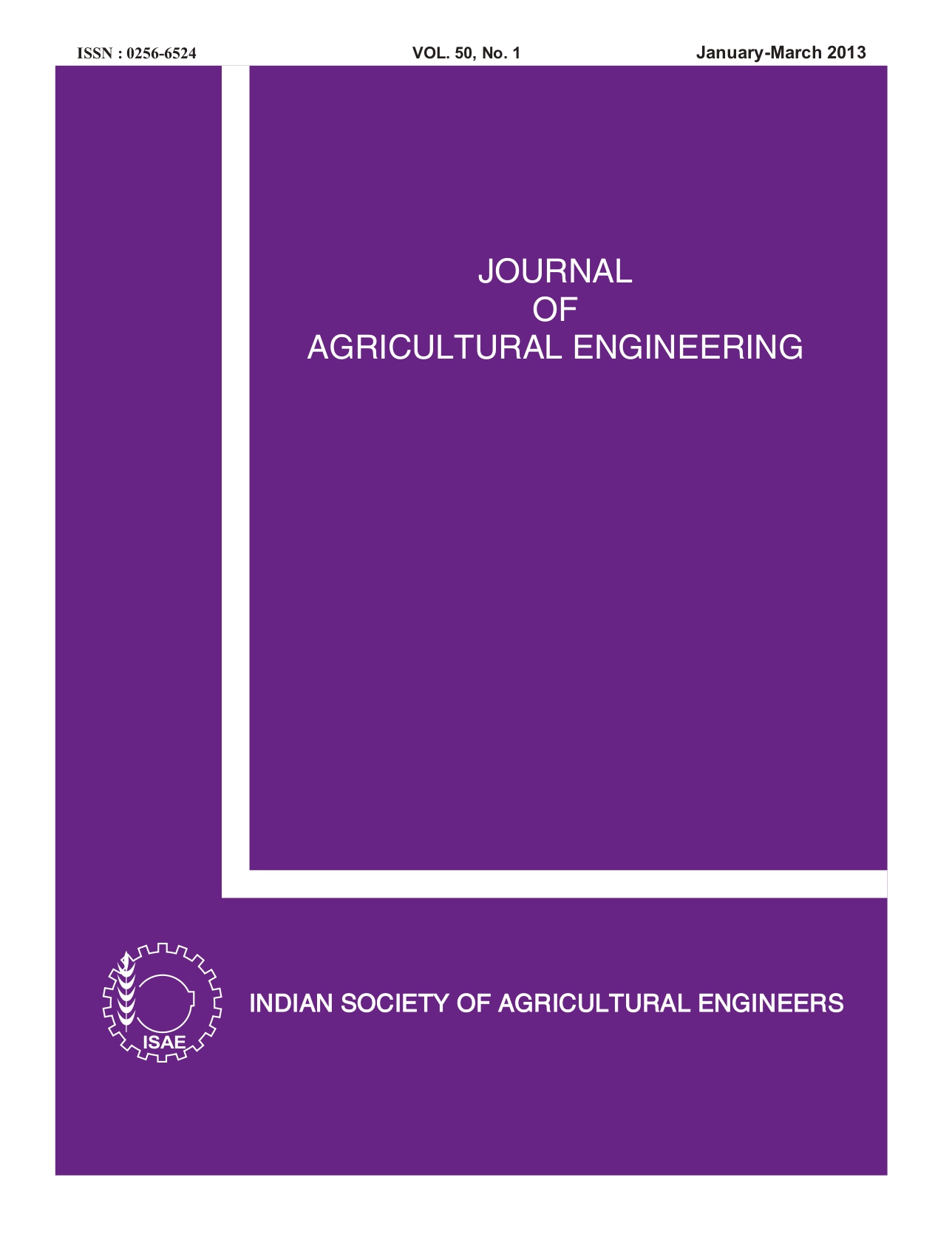Osmotic Dehydration of Pineapple with Sucrose: Mass Transfer Kinetics
DOI:
https://doi.org/10.52151/jae2013501.1499Keywords:
Sucrose concentration, slice thickness, water loss, solute gain, modelAbstract
Osmotic dehydration of pineapple (Ananas comosus Linn.) slices (6, 9 and 12 mm) was carried out using aqueous solutions of sucrose of different concentrations (40, 50 and 60 % w/w) as osmotic media, at various fruit to solution ratios (1:2, 1:4 and 1:6). Total mass, water loss, solute gain and moisture content were determined for each sample at different time intervals (up to 6 h) of contact with the osmotic media. Regression analysis revealed that the osmotic dehydration kinetics depends strongly on sucrose concentration and slice thickness. The water loss and solute gain are more intensive at higher sucrose concentration and lower slice thickness. The effect of all the process parameters was observed to be significant at 10% level on both water loss and solute gain. Penetration and Magee model was fitted to the experimental data. Magee model was observed to represent water loss and solute gain more accurately as compared to Penetration model.
References
Ade-Omowaye B I O; Rastogi N K; Angersbach A;Knorr D. 2002. Osmotic dehydration of bell peppers: influence of high intensity electric field pulses and elevated temperature treatment. J. Food Eng., 54, 35-43.
Agnelli M E; Marani C M; Mascheroni R H. 2005. Modeling of heat and mass transfer during (osmo) dehydrofreezing of fruits. J. Food Eng., 69, 415-424.
Alam M S; Singh A. 2008. Modelling of mass transfer in osmotic dehydration of aonla slices. J. Agric. Eng., 45(3), 38-44.
Barat J M; Fito P; Chiralt A. 2001. Modeling of simultaneous mass transfer and structural changes in fruit tissues. J. Food Eng., 49, 77-85.
Bongirwar D R; Sreenivasan A. 1977. Studies on osmotic dehydration of banana. J. Food Sci. Technol., 14, 104- 113.
Chenlo F; Moreira R; Fernandez-Herrero C; Vazquez G. 2007. Osmotic dehydration of chestnut with sucrose: mass transfer processes and global kinetics modeling. J. Food Eng., 78(3), 765-774.
Kadam D M; Dhingra D. 2011. Mass Transfer Kinetics of Banana Slices During Osmo-convective drying. J. Food Process Eng., 34 (2), 511–532.
Kar A; Gupta D K. 2001. Osmotic dehydration characteristics of button mushrooms. J. Food Sci. Technol., 38, 352-357.
Kumar V; Kumar G; Sharma P D. 2009.Effect of osmoconvective drying on quality of litchi. J. Agric. Eng., 46(4), 31-35.
Marani C M; Agnelli M E; Mascheroni R H. 2006. Osmofrozen fruits: mass transfer and quality evaluation. J. Food Eng. (DOI 10.1016/j.jfoodeng.2006.03.022)
Pokharkar S M; Prasad S. 1998. Mass transfer during osmotic dehydration of banana slices. J. Food Sci. Technol., 35(4), 336-338.
Rastogi N K; Raghavarao K S M S. 2004. Mass transfer during osmotic dehydration of pineapple: considering Fickian diffusion in cubical configuration. LWT-Food Sci. Technol., 37(1), 43-47.
Singh B; Kumar A; Gupta A K. 2007. Study of mass transfer kinetics and effective diffusivity during osmotic dehydration of carrot cubes. J. Food Eng., 79 (2), 471- 480.
Sutar P P; Gupta D K. 2007. Mathematical modeling of mass transfer in osmotic dehydration of onion slices. J. Food Eng., 78(1), 90-97.














